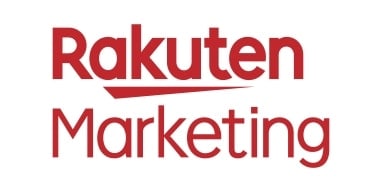TV, radio and print ruled in the world of advertising for decades. Advertisers depended on these traditional mediums to build brands by putting products in front of wide audiences.
These formats relied heavily on gut feeling and assumptions, defining their audiences through a ‘finger in the air’ approach. Frequently, advertisers pinned their hopes on eyeball quantity over quality, trusting their messages would resonate with at least some members of the audience.
Then the internet changed advertising forever. Digital spaces were monetised and programmatic advertising became the most cost-effective method of delivering your messages to the right audience at the most appropriate time on the best fitting device.
As the industry has gone from strength to strength, an increasing amount of digital advertising environments can be traded programmatically – including the long-established channels mentioned above.
Although this evolution has resulted in more sophisticated ad buying techniques and increased consumer targeting, it has also left advertisers with an overwhelming choice of strategies. This choice overload has resulted in some marketers struggling to scale their programmatic ad spend budgets beyond straightforward retargeting.
Take the stairway to mass-market audiences
Through a step-by-step data-driven methodology, you can go from micro to macro audience segments and levels of campaign complexity. Put simply, data can facilitate your move from small-audience campaigns (e.g. retargeting) to the mass market of innovative models such as out-of-home (OOH) media and programmatic audio and TV. Additionally, this data-led approach can also gradually scale your investment, maximising your ROI.
While it’s true that programmatic counterparts of traditional channels allow for advanced segmentation, investment decisions still tend to excessively hinge on intuition. With access to these macro target consumers coming at a premium, data-driven and gradual investment make the most business sense. If your first-party consumer data (e.g. your CRM data) identifies most reliably who your brand advocates and consumers are, why would you not use it to supercharge your mass-market tactics?
Still, the jump from retargeting banner to OOH advertising is too big for most brands to attempt. The reason for this is that digital advertising budgets can quickly be depleted. Even more so when the data leveraged is not mature enough or layered and media buyers are not experts at purchasing advertising space within these new environments. That’s why we have come up with the ‘Stairway to Macro Success’.
Your first steps…
Start on the lowest step: launch retargeting campaigns using your first-party data. Then, analyse your performance and optimise your campaigns accordingly. Leveraging this data and layering in other data sources – i.e. second- and third-party data – means you can steadily move up the stairway, scaling out the reach of your campaigns.
Accessing third-party data is important because it allows you to identify new audiences that look like the customers who are already purchasing from you. Similarly, adding second-party data from trusted partners to the mix boosts your reach and acquisition efforts.
Data – properly collected and studied – acts as the handrail, providing support: tangible facts and statistics you can hold on to for safety when going up the stairs. Continuing with the metaphor, the more balusters the more supported the rail. So, the more data sources the sturdier the relevancy and effectiveness of your campaign and investment growth.
Attributed reporting would underpin the whole structure and facilitate a secure climb – by identifying with certainty the full scope of influence your campaigns drive.
Once you’ve found your feet
In order to go from micro to macro audiences fruitfully, we recommend starting with retargeting campaigns. Utilising data insights from these campaigns, you can inform subsequent campaigns – which become progressively wider in terms of audience size.
Using this methodology, you move from small- to large-scale targeting: from retargeting to prospecting campaigns, followed by branding exercises and ultimately mass-market options – like OOH media and TV advertising. For instance, when considering OOH advertising you might be tempted to target high-footfall areas. However, engagement rates or impressions from your retargeting strategies might highlight location clusters/patterns you might not have considered otherwise.
Each of the steps taken up the stairway would be sustained by data learnings acquired at the previous step. Consequently, you’d achieve the holy grail of advertising: reaching the big audiences promised by traditional advertising mediums – such as TV and radio – but at a fraction of the cost and upheld by irrefutable facts – data!


